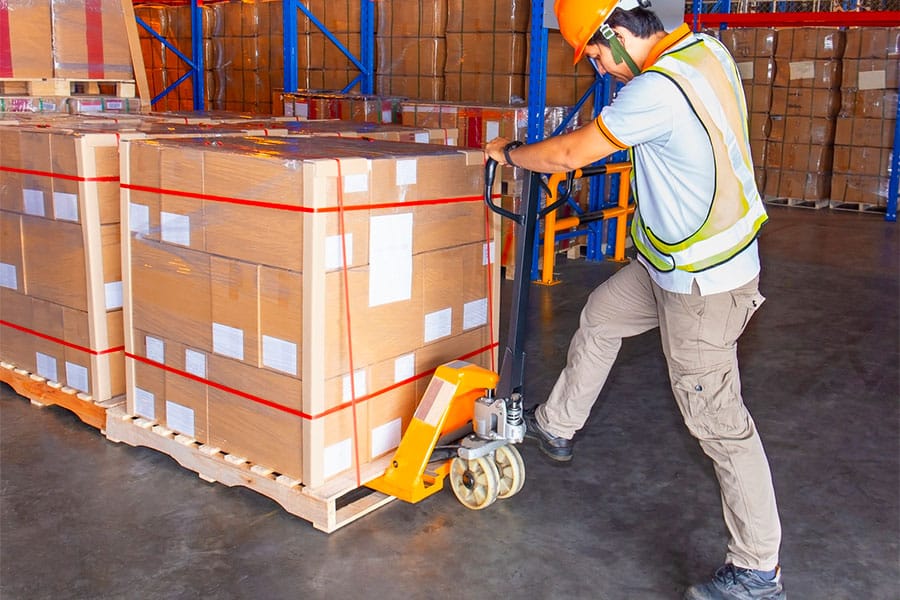Parcel strapping is an essential part of the shipping industry. Whether you are a small operation going one pallet at a time or your inventory fills warehouses across the country, you will need strapping products and shipping couriers to move your products. In the world of strapping, there are a few options for strapping down your goods; the most prominent among them are the plastic-derived products of polypropylene and polyester. But what are the differences? Is one better than the other? What types are best for what materials? Have all those questions and more answered below.
Polypropylene VS Polyester Strapping – The Material Components
First and foremost, polypropylene and polyester are made of similar, albeit different materials that affect the structure, strength, look, and overall use cases of each as a strapping material. Polypropylene is a more lightweight strapping material with a flat or non-reflective design, whereas polyester is considerably heavier (although not as much as steel) and has a glossy finish. In terms of strength, polyester is far more durable and able to handle more rigid and heavy loads than considerably more delicate polypropylene.
Polypropylene VS Polyester Strapping – The Cost
When considering the cost of a product, it is essential to evaluate what you are shipping and the volume of strapping needed for every pallet. Polyester is the more expensive option, sometimes selling for up to double what a similar polypropylene load may cost. Furthermore, polyester weighs slightly more than its counterpart due to its added strength. While a few extra grams of weight may not matter on an individual project, the additional weight over time can increase courier costs. If you can use polypropylene in your shipping and tend toward lightweight goods, the extra cost of polyester may not be worth the added benefits.
Polypropylene VS Polyester Strapping – Use Cases
While some may see polypropylene as an inferior product, it has several uses that make it an essential strapping product. The main benefits of polypropylene in the shipping industry include the following:
- Lightweight and suitable for goods like food products, lumber, light boxes, electrical components, etc.
- It can be applied with tools or by hand, whereas polyester requires special equipment and cannot be done by a lone individual.
- Suitable for fragile loads due to its lower tensile strength and greater give.
- The embossed finish gives a superior grip to products at the cost of being less manageable by specific types of strapping machinery.
Polyester is nearly as strong as steel and has a rigidity that makes it the best strapping product for any load that you may have previously had to use steel banding exclusively. The benefits of polyester strapping are:
- Greater tensile strength than polypropylene and other banding products while still having some give when products shift that would usually dent or destroy steel banding.
- It maintains tension far better than polypropylene and can hold heavier products longer, making it perfect for long-term shipping.
- It can handle the weight of even the heaviest of loads. Polyester strapping can ship things such as bricks, metals, and liquids like large loads of beverages.
Polypropylene VS Polyester Strapping – Which Material Is Best?
While polyester is far more reliable, its high price and need for tools make it a bit more cumbersome than simple polypropylene strapping products. Ultimately, it will come down to your use case and the weight of the goods you are shipping, with heavier products being far safer when bound in polyester. For more information and to order any of our strapping products, reach out to the pros at USA Strapping today! We can be reached by phone at 888-768-0001.

